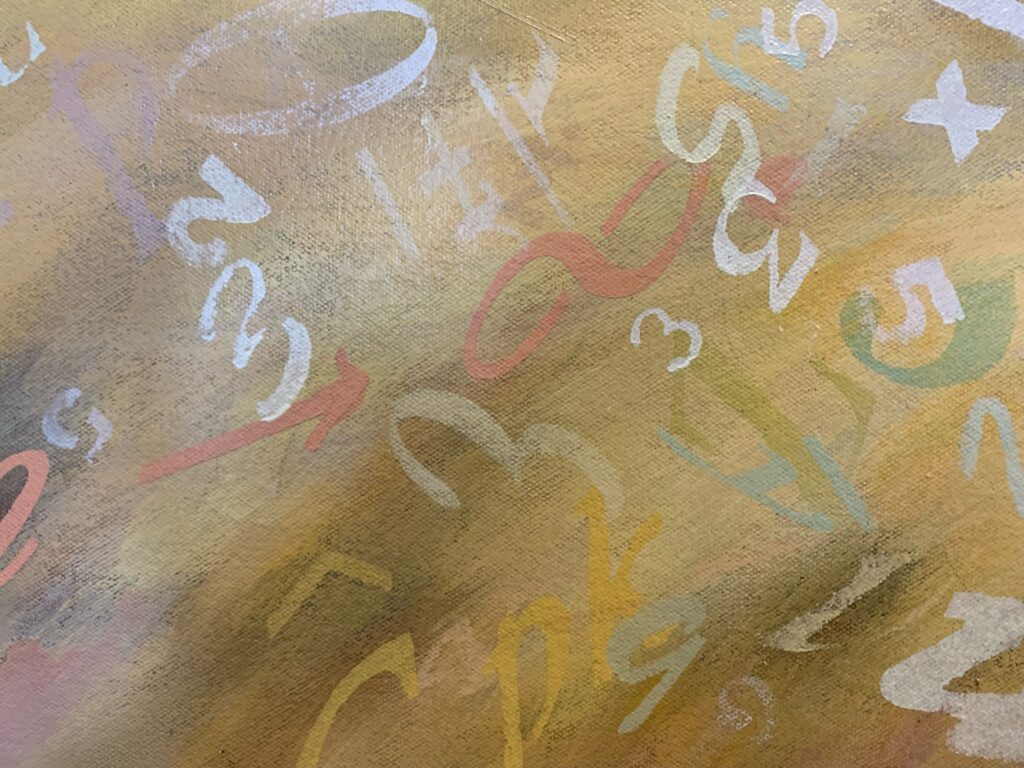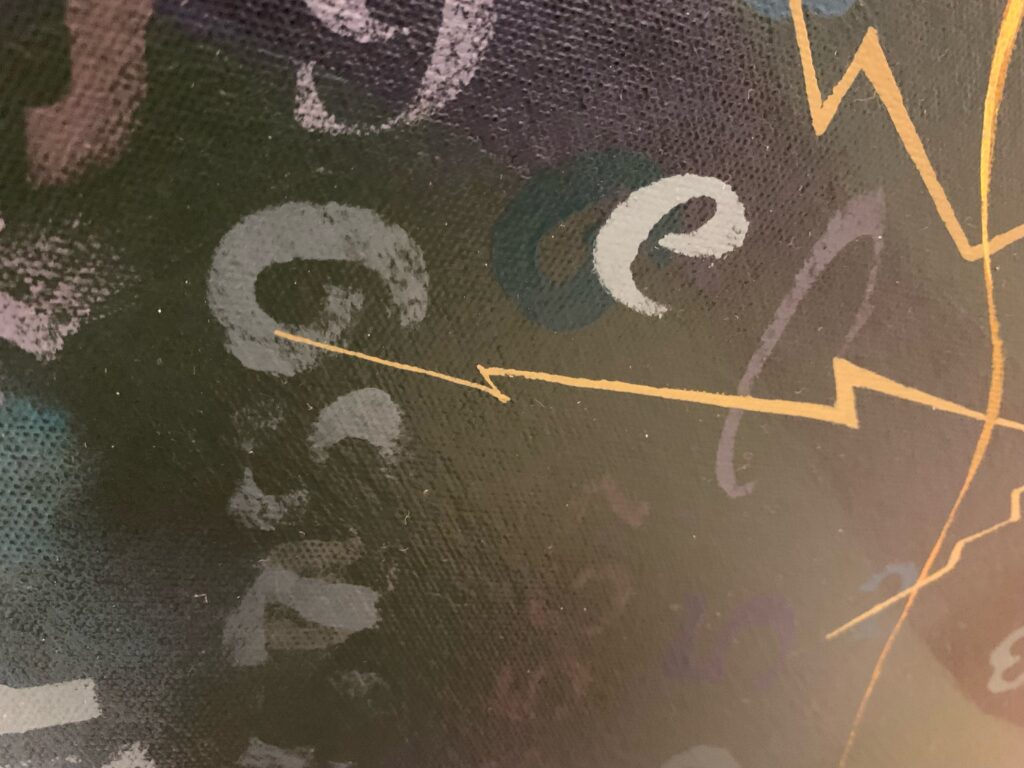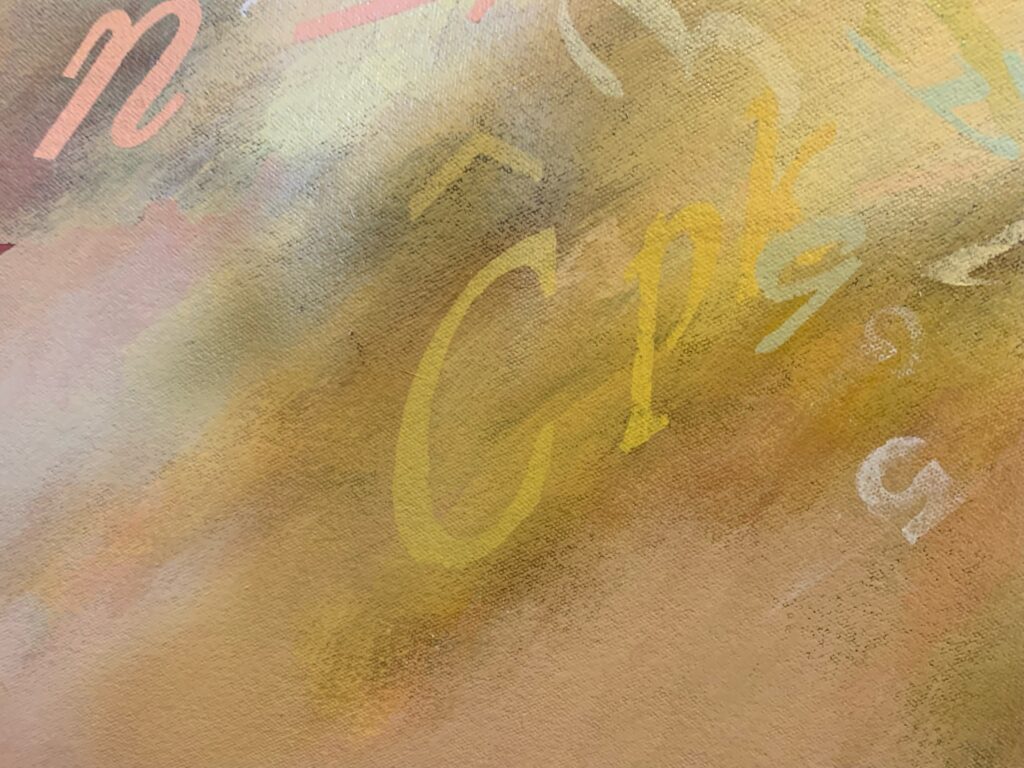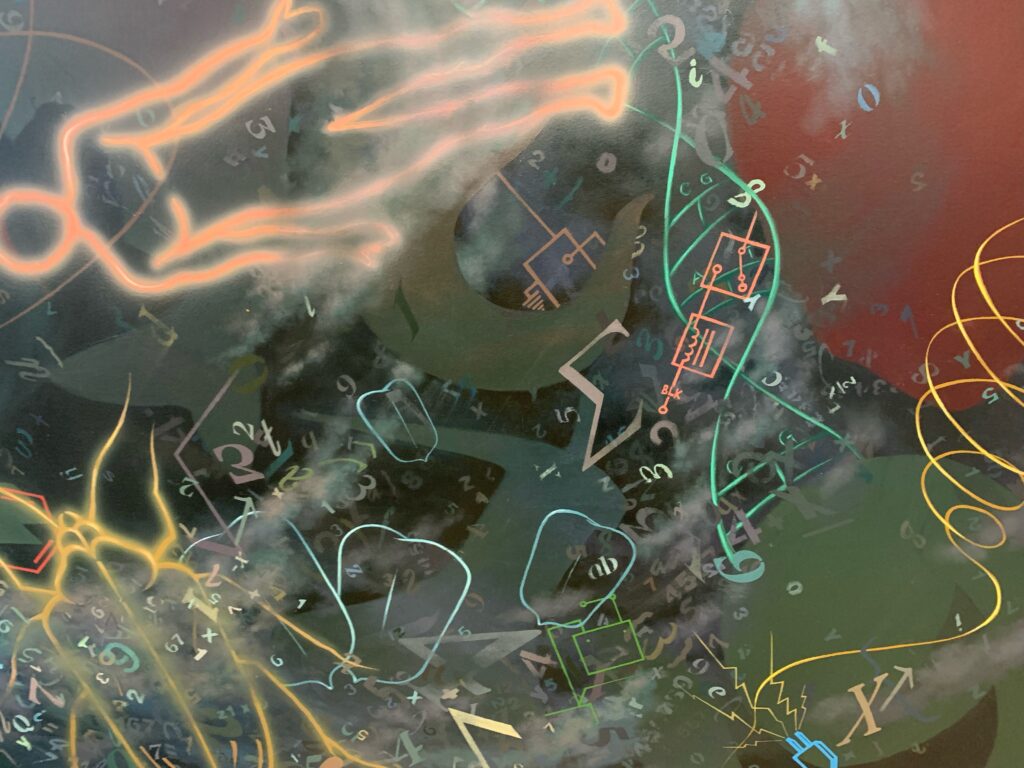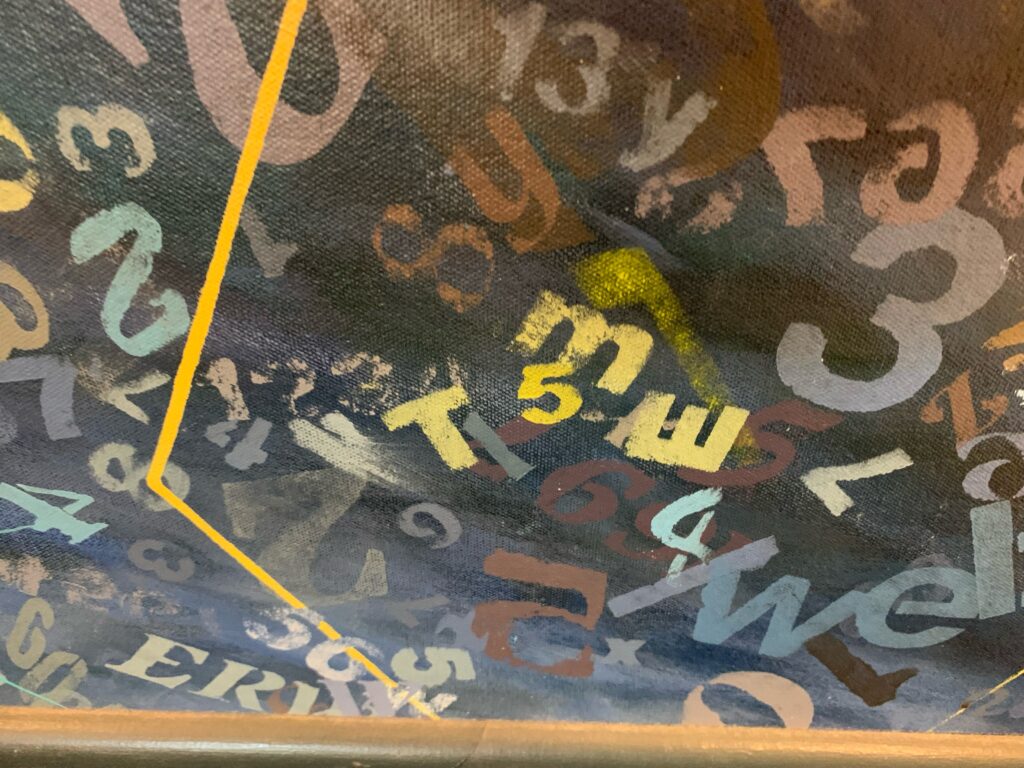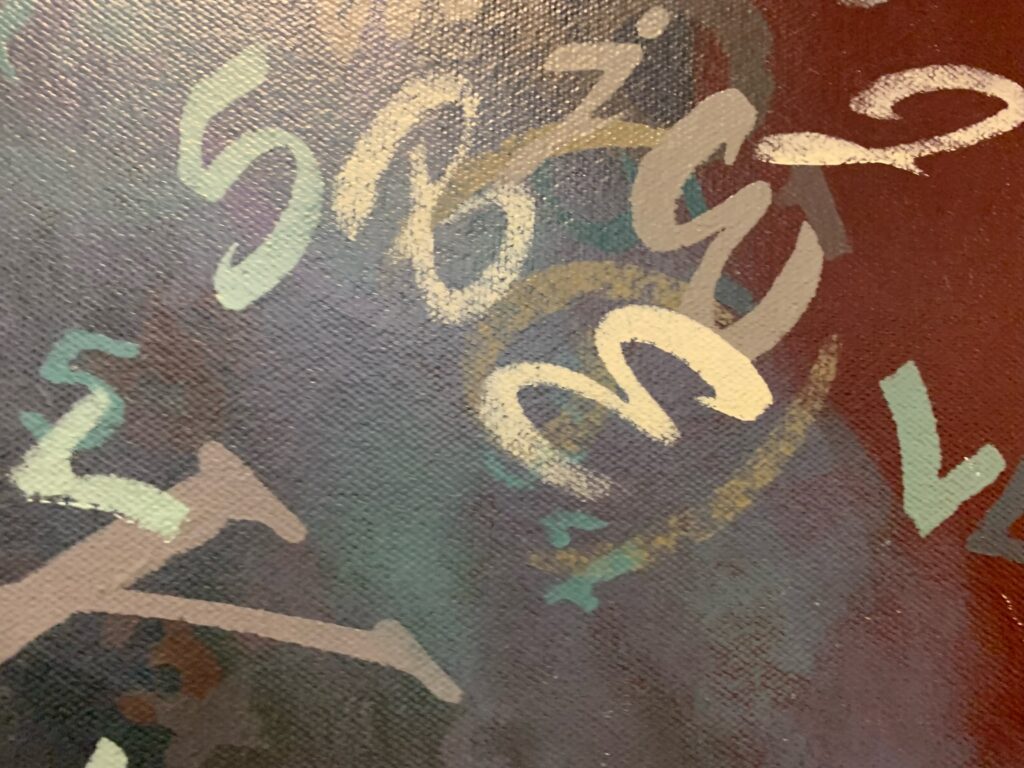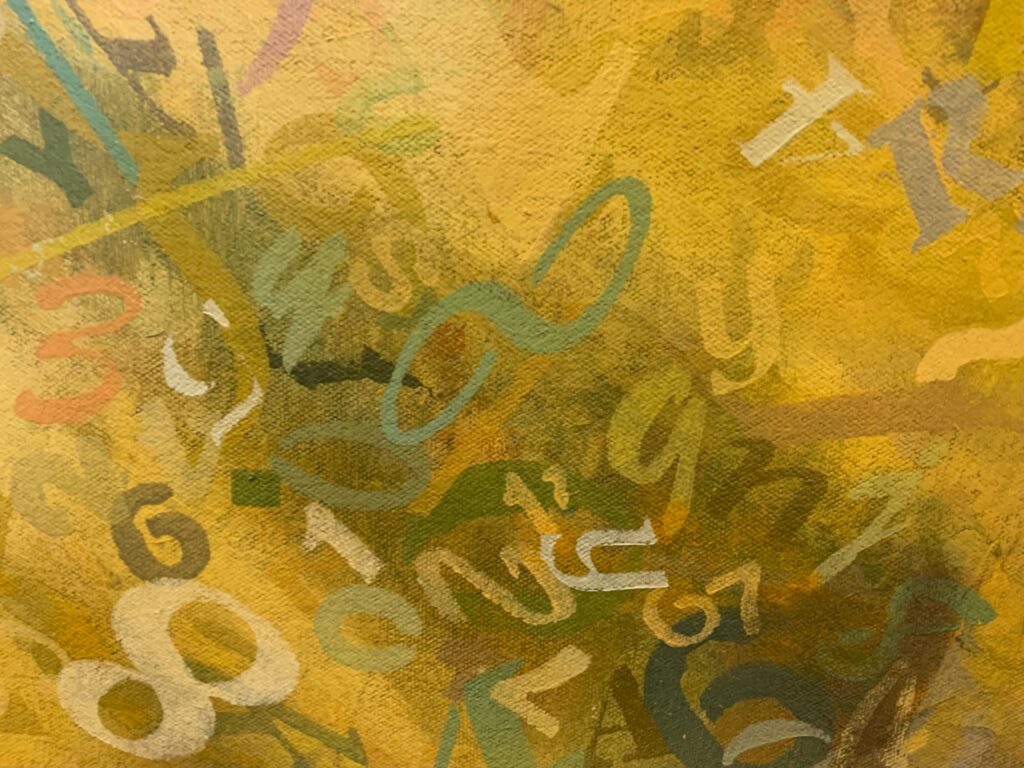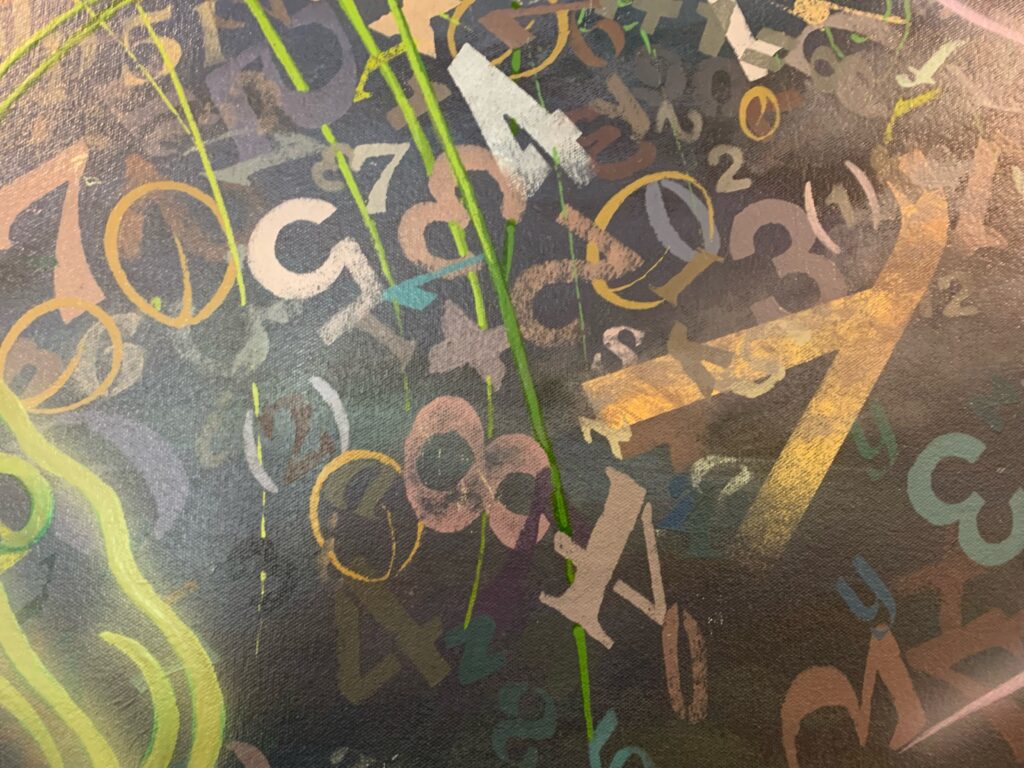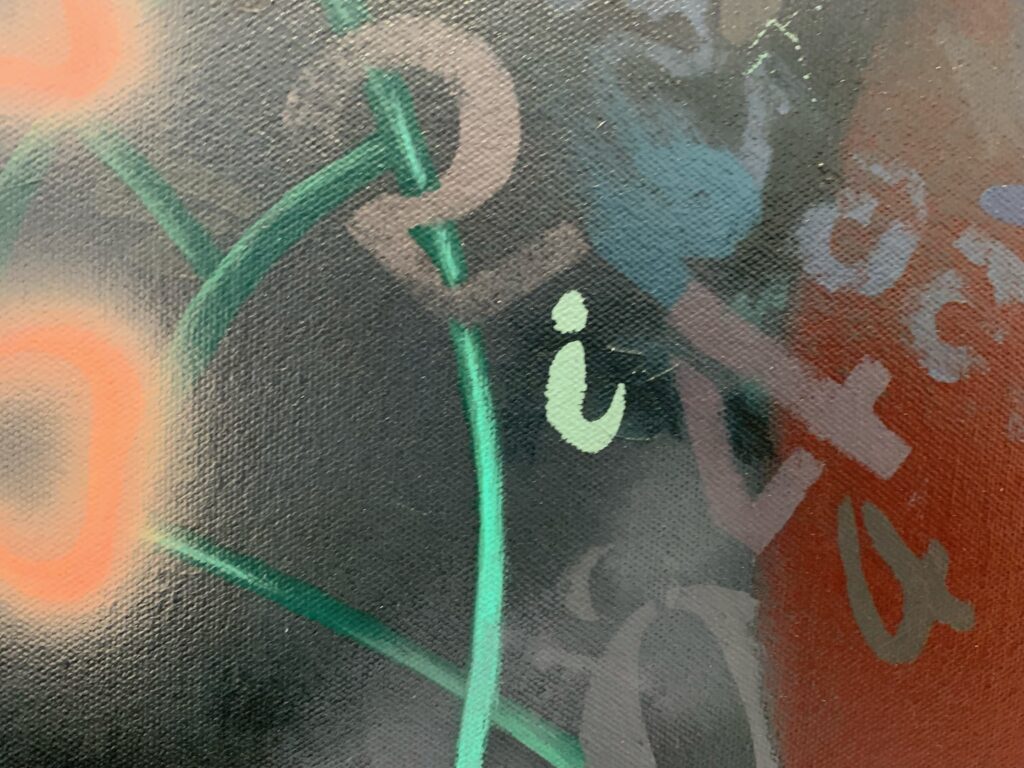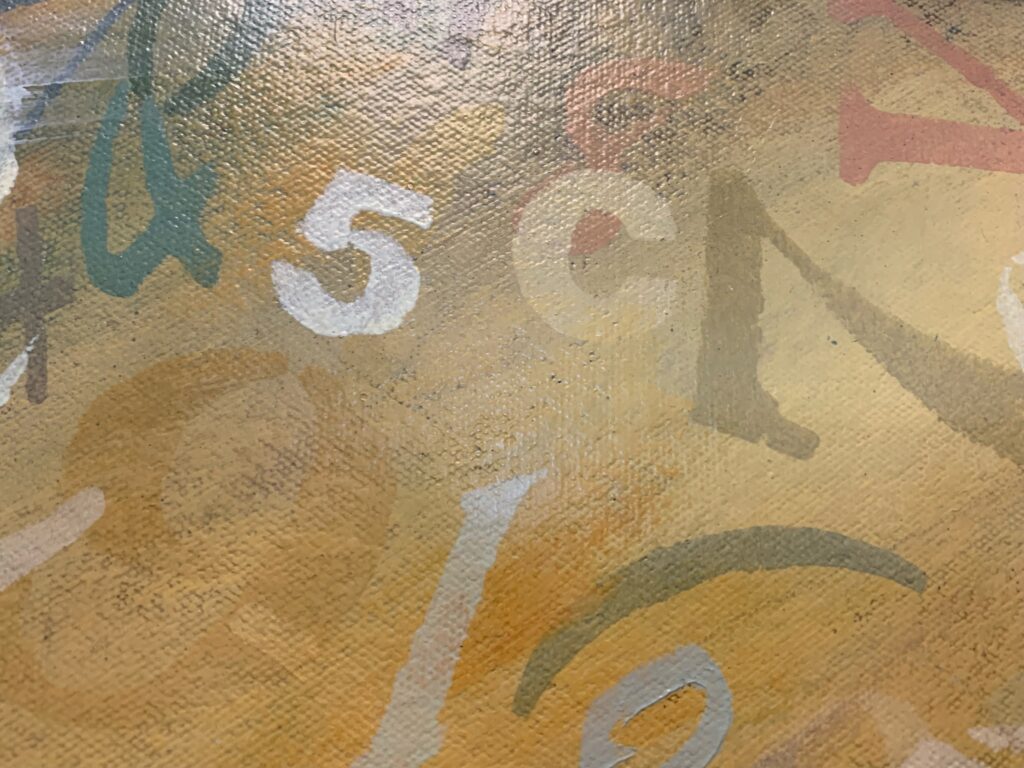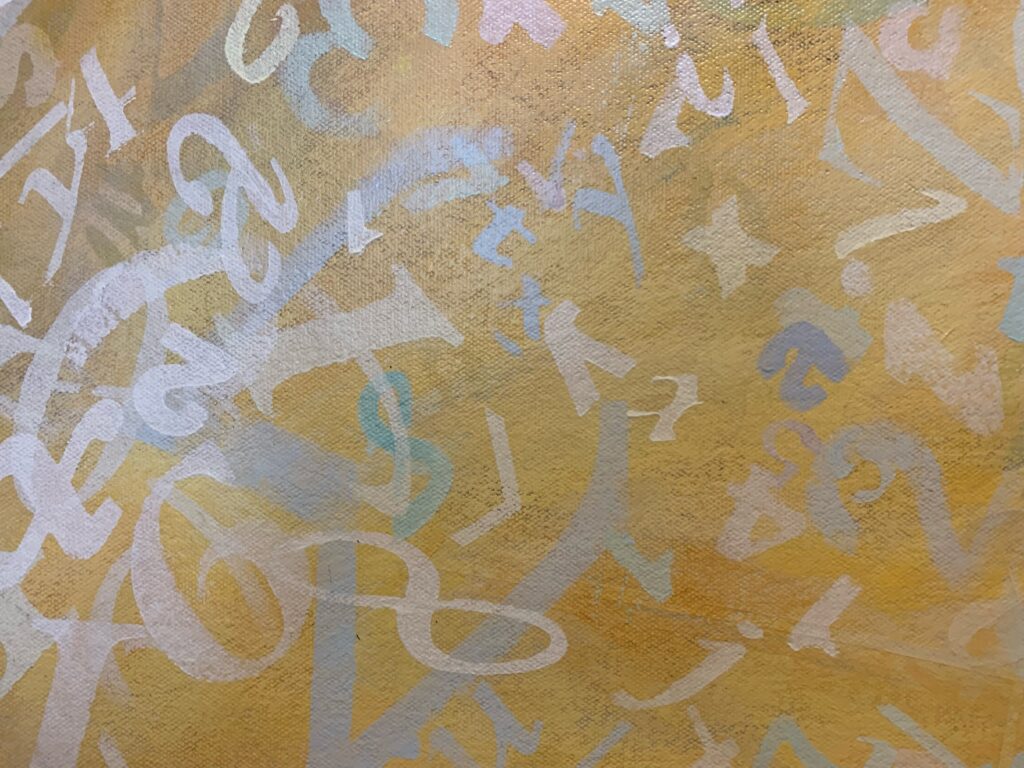
About the Art

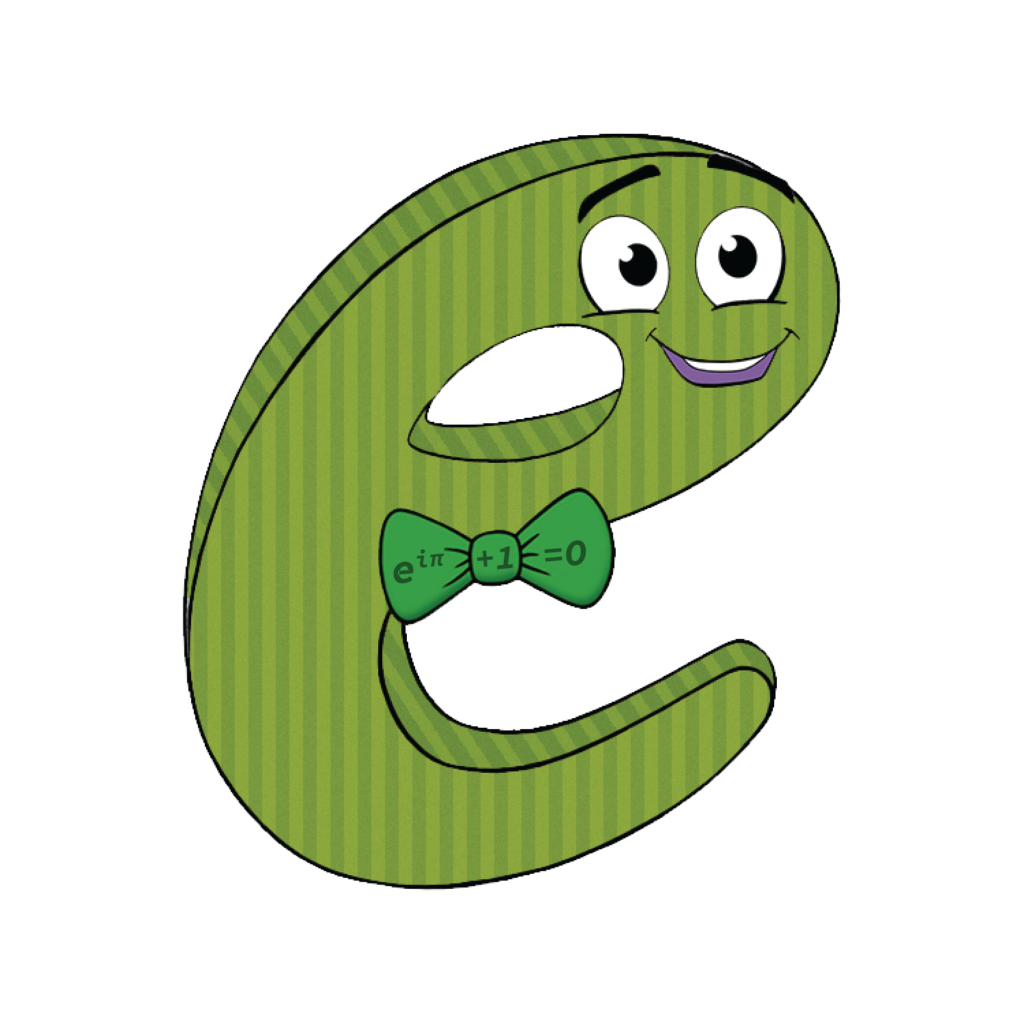
For whatever reason someone enters Snedecor Hall, home of Iowa State University’s Department of Statistics, they immediately confront Inferences Drawn installed in the main hallway in 2009. At nearly 25 ft in length, 5 ft from top to bottom, and within an arms’ length distance of a viewer, it is impossible to miss but impossible to photograph.
The focal point of the large canvas mural is a brightly lit androgynous human head surrounded by diverse pictorial and mathematical symbols. The viewer’s right side includes undisciplined symbols that suggest chaos and the left side’s defined symbols suggest simplification and themes. With the human head as the processor, the chaotic mess has become a story.
With multifaceted layers including more than 3,000 symbols, viewers are encouraged to search for, identify, or speculate on the use of the diverse symbols located within easy sight. With the vast number of symbols in the painting, viewers often discover something new. During the development of Inferences Drawn, artists Tom Rosborough and Bill Barnes spent 18 months working with the department members, as well as examining their whiteboards, manuscripts, and texts.
About the Artist
Tom Rosborough is an interdisciplinary artist specializing in illustration and public art. Born in 1951, he was educated at the University of Chicago Academy of Art. He is an illustrator and graphic designer whose art has appeared in publications including the Minnesota Medicine Journal, and Chicago Tribune Magazine (see images below).

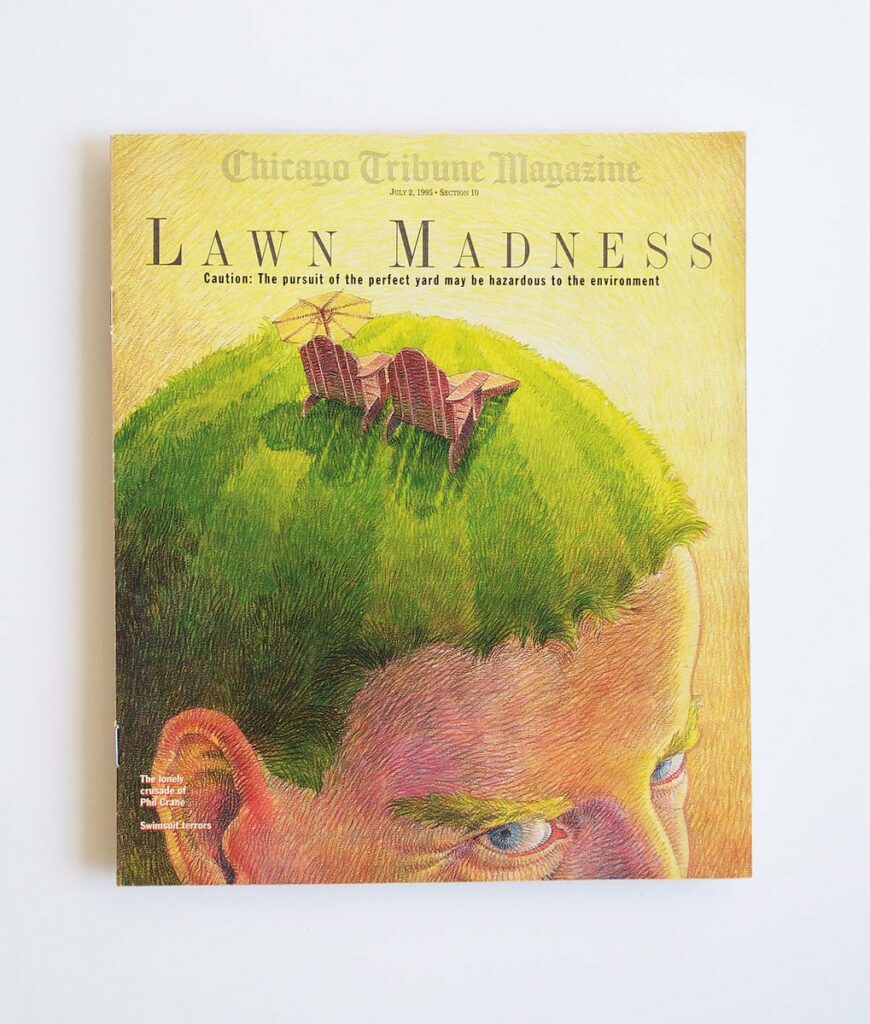
Below is Rosborough’s mural, Davidson’s Dream, in the Biorenewables Building, Iowa State University, Ames, Iowa.
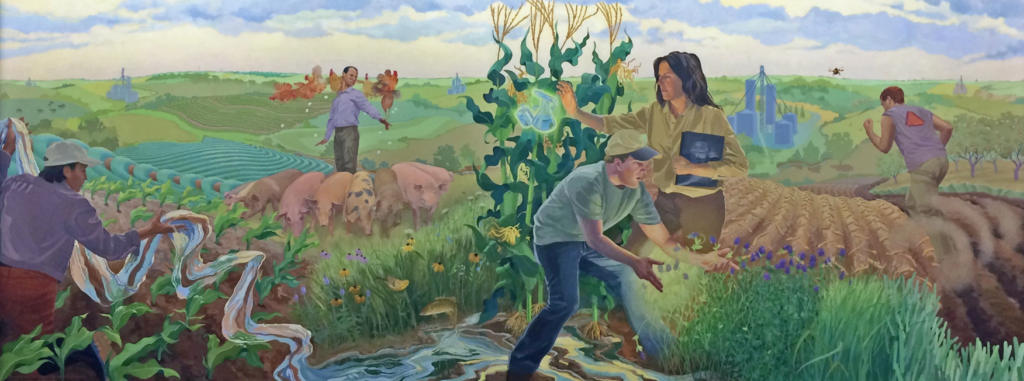
Davidson’s Dream, 2015, Iowa State University, Ames, Iowa
For additional information about Rosborough, visit Elements of Erudition in this book.
William Barnes (1958-2023) grew up in California before continuing his art studies at Drake University in Des Moines, Iowa and University of in Iowa City, Iowa. While he attended the University of Iowa, he studied art history and concentrated in American Realism. (For information about American Realism, see Breaking the Prairie Sod in this book.) Barnes was known for being an American painter of small landscapes and still-life studies combining unlikely small objects.
Until his death in April 2023, Barnes taught adult literacy and voluntarily created art installations at the Des Moines Public Library. Barnes completed another large-scale mural like Inferences Drawn. Below is an image of Barnes’ Clearing the Way at the Iowa National Guard.

Clearing the Way, Drill Hall of the Armed Forces Reserve Complex, Middletown, Iowa
Relevant Terminology/History
Inference is a conclusion reached based on evidence and reasoning.
Statistics is the practice or science concerned with developing and studying methods for collecting, analyzing, interpreting, and presenting empirical data. Often the goal is to infer overall patterns from a sample.
The Statistical Laboratory and Statistics Department at Iowa State University were established by George W. Snedecor in 1934 and 1947 respectively. It was the first of its kind in the nation. The primary mission of the Department and the Statistical Laboratory is the advancement of statistical knowledge, which dates to the creation of the department. Since 1947, the Department offered statistical consulting, teaching, research, and leadership in the development/application of statistical methodology. Quantitative methods are crucial to government, industrial, and academic research, and the Department has continued to grow and broaden its interests, providing leadership in the development of new methodology.
George W. Snedecor (1881-1974) was an American mathematician and statistician who contributed to the foundations of analysis of variance, data analysis, experimental design, and statistical methodology. Snedecor moved to Iowa in 1913 when he became a professor of Mathematics. He founded the first academic department of Statistics in the US, at Iowa State University in 1947. He also created the first Statistics Laboratory in the US at Iowa State University and was a pioneer of modern applied statistics in the US. His 1938 textbook with William Cochran, Statistical Methods became a classic textbook for students in many research disciplines.
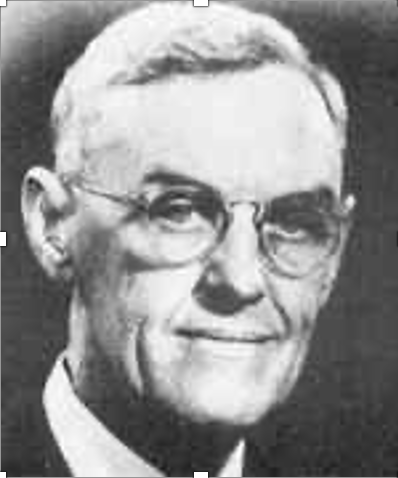
Image of George W. Snedecor courtesy of Wikipedia
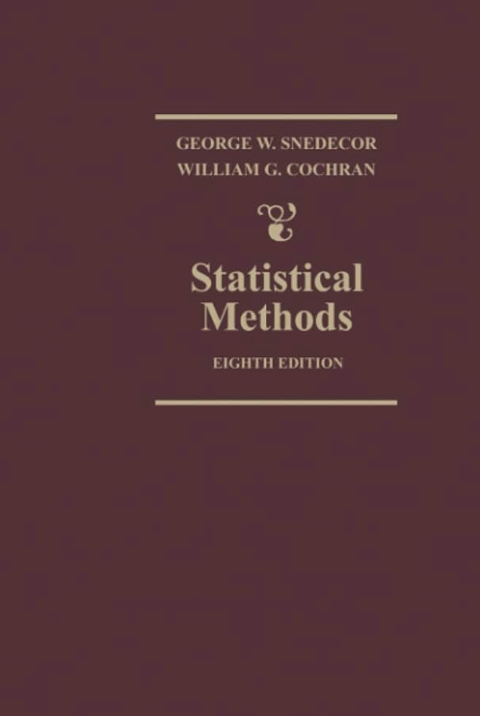
Statistical Methods, 8th edition, Snedecor and Cochran, 1991, published by Wiley-Blackwell.
*Fun Facts: Snedecor’s F distribution, a continuous probability distribution that arises frequently as the null distribution of a test statistic, is named after Snedecor. Of course, the building housing the Department of Statistics is also named after Snedecor.
William Cochran was a prominent statistician. Although born in Scotland Cochran spent most of his life in the US. He worked at Rothamsted Experimental Station in the UK from 1934 to 1939. He then joined the faculty at Iowa State University to develop a graduate program in statistics. After about four years he took a leave from ISU to join Wilks’ Statistical Research Group at Princeton University, He subsequently joined North Carolina State University, Johns Hopkins University, and Harvard University. In addition to writing with Snedecor, Cochran authored Experimental Designs (with Gertrude Cox), Sampling Techniques, Statistical Methods Applied to Experiments in Agriculture and Biology, and Planning and Analysis of Observational Studies (edited by Lincoln Moses and Frederick Mosteller).
Leonhard Euler (1707-1783) was a Swiss mathematician considered one of the greatest mathematicians. Carl Frederich Gauss was believed to say, “Read Euler, read Euler, he is the master of us all.” Euler was one of the most prolific mathematicians with 866 publications. Euler is credited with popularizing the Greek letter π to denote the ratio of a circle’s circumference to its diameter, as well as using the notation f(x) for the value of a function, the letter i to express the imaginary unit, the Greek letter ∑ to express summation, ∆ for finite differences and gave the current definition of the constant e, the base of the natural logarithms, now known as Euler’s e.
Check out The Numbers Show (written and produced by NumbersAlive!) as Host 0 welcomes Euler’s e.
Euler’s identity

Richard Feynman called Euler’s identity “the most remarkable formula in mathematics.” Euler’s identity is revered due to its simplicity and that it links together the five most critical mathematical constants: 0; 1; e; i; and π across the fields of trigonometry, calculus, and complex numbers.
Richard Feynman (1918-1988) was an American Theoretical physicist, known for his work in quantum mechanics and particle physics, among other areas of physis. Feynmann received the Nobel Prize in Physics in 1965 jointly with Julian Schwinger and Shin’ichiro Tomonaga for his contributions to the development of quantum electrodynamics. Feynman played an important role on the Presidential Rogers Commission which investigated the 1986 Challenger disaster. During a televised hearing, Feynman demonstrated that the material used in the shuttle’s O-rings became less resilient in cold weather by compressing a sample of the material in a clamp and immersing it in ice-cold water.
The Numbers Lady is the teaching avatar of Dr. Rebecca Klemm. She developed and trademarked the name after hearing from numerous adults who were intrigued by her storytelling, visualization, historical development, and relevance to daily life as themes to the teaching of math. “Where were you when I was studying math?” was such a prevalent response to her presentations ostensibly to young learners. She knew she needed a visual alternative to a traditional math teacher at a podium or wandering an audience to alleviate anxiety when being introduced as a math teacher to learners of ALL ages.
The Numbers Lady continues to teach and write using fundamental ideas of communicating technical ideas gained from her time at The Statistical Laboratory with undergraduate and graduate students from diverse disciplines. Students coming for assistance were often nervous about “not getting” math and statistics. Graduate students needed statistical help with the required design and analysis for their dissertations. She learned to ask, “What is the question?”.
Learning Guide
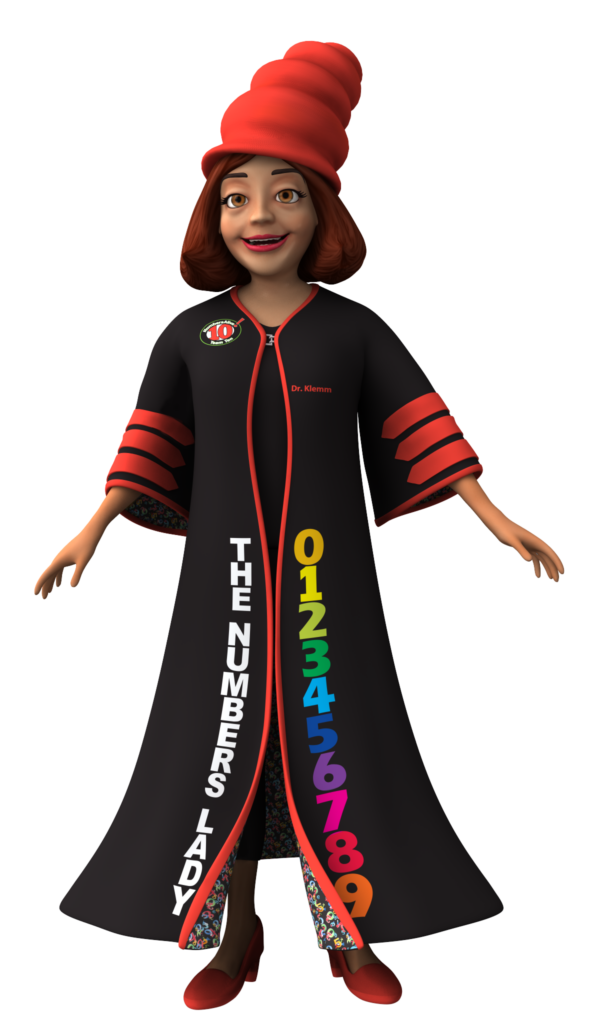
- What do you think the title has to do with the art?
- Why do you think STEM Squad Characters e and ɛ (epsilon) speak about Inferences Drawn?
- Why does e consider ɛ his Greek cousin?
- Why do you think The Numbers Lady speaks on the Inferences Drawn spread? What does she mention is the reason she attended Iowa State University for her graduate studies in Statistics?
- How does the red image with white numbers relate to the art? Can you locate the shape in Inferences Drawn?
- How does the hidden blue image relate to the art?
- Why do you think Dr. Klemm designed e with a bowtie decorated with the formula, Euler’s identity [ e^( iπ)+1=0 ]?
- Why do you think Dr. Klemm designed epsilon with a + in one eye and a – in the other?
- Do you recognize the large formula on the left side of Inferences Drawn? Do you know what the symbols and equation represent? Hint: Although the symbols may look intimidating, the equation is merely the symbolic description of the most common formula many adults use on a weekly basis—the average!
- Which mathematician can you thank for the ∑ symbol in the equation mentioned in the prior question?
- What do you think the image of the baby on the upper left side of Inferences Drawn represents about statistics?
- Can you identify any of the other images on the left side of Inferences Drawn?
- What do you like best about the images in Inferences Drawn?
- Can you find all of Team Ten and STEM Squad members in Inferences Drawn? If you need some assistance, explore the images below that Dr. Klemm took when visiting the Department of Statistics in 2022.
- How do you think Dr. Klemm’s training at Iowa State University influenced her approach to math and statistics education to ask, “What is the question?” rather than “What is the answer?”?
